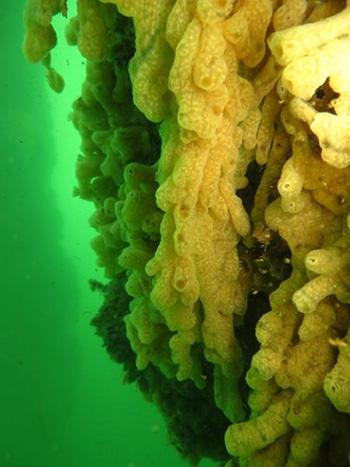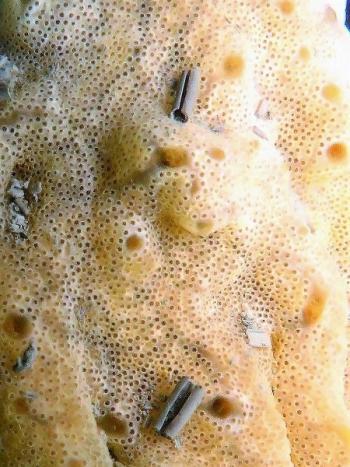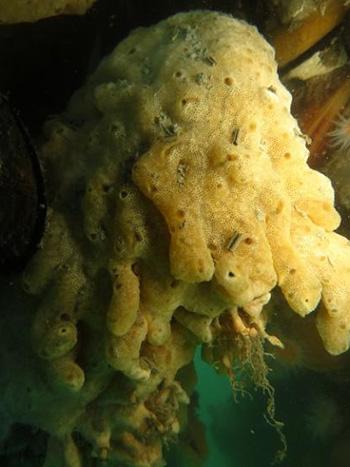Response to Carpet sea squirt outbreak in Australia. This includes where it has been detected, restrictions in place, actions you must take, and resources to help you manage risks.
Carpet sea squirt (CSS) is an introduced marine pest in Australia. The pest is also known as invasive colonial sea squirt or sometimes as 'sea snot' or 'sea vomit'.
CSS overgrows and smothers native marine species such as shellfish, sea sponges and algae. It fouls vessels, marine infrastructure, and aquaculture stock and equipment.
On this page
Detection in Australia
Carpet sea squirt has been detected in both Western Australia and New South Wales.
The first detection was in April 2021 at HMAS Stirling, Garden Island, WA. In January 2023, CSS was also detected at the Australian Marine Complex in Henderson, WA.
In May 2023, CSS was detected in NSW at Fleet Base East in Sydney Harbour.
Response program
The lead agency for each state response to CSS varies based on the location. Some CSS detections are at Defence sites. At these locations, many agencies work together on the response.
The Consultative Committee on Introduced Marine Pest Emergencies (CCIMPE) provides technical advice on each response. CCIMPE includes marine pest managers from Australian, state and territory governments.
CCIMPE has recommended that it is not technically feasible to eradicate CSS from Australia. This recommendation was endorsed by the National Management Group (NMG).
In June 2024, the national response for CSS officially transitioned to management.
How we coordinate our response to outbreaks.
Management activities
As the CSS response has transitioned to management, CCIMPE has been stood-down on the response.
Coordination of national management activities for CSS is now being led by the Marine Pest Sectoral Committee (MPSC).
It is still important to prevent the spread and impacts of CSSCSS. Check the regulations in your relevant jurisdiction. Note that CSS is listed as prohibited matter in NSW which places strict prohibitions on dealing with this marine pest.
Additional management activities will be continued by relevant Commonwealth, state and territory biosecurity agencies. These activities may include:
- Continued surveillance of vessels and marine infrastructure to monitor the presence, spread, and extent of CSS
- Vessel hygiene and inspection protocols to prevent spread of CSS
- Provision of advice to stakeholders who may be impacted by CSS incursions
- Research and development into CSS biology and its impacts.
A Quarantine Area Notice remains in place at the Australian Marine Complex in Henderson, WA, until 14 March 2025 to manage requirements for vessels exiting the quarantine area.
Your obligations
Follow these steps to help stop the spread of CSS.
Report sightings
Report anything unusual, even if you’re not sure.
Contact the relevant state or territory to report a marine pest sighting.
Keep your gear clean
Recreational boaters, fishers and divers should follow the check, clean, dry method. This means:
- Check wheel arches on trailers, boat propellers, fishing tackle and footwear for bait, debris and seaweed.
- Clean your boats, trailers, wetsuits, fishing rods and equipment. Use soapy water to clean surfaces.
- Dry your boat and trailer, fishing rods and other equipment completely before using them at another location.
Follow the rules
Keep exotic pests and diseases out of Australia. Always follow our strict biosecurity rules when moving around Australian waters or entering from overseas.
Foreign warships are requested to comply with Australian Government requirements to enter Australian waters.
Check requirements for military vessels arriving in Australia.
About the pest
CSS is an invasive marine animal. It can overgrow rocks, shellfish such as oysters, sea sponges and algae. It covers man-made structures such as wharves, jetty pylons, pontoons, buoys, aquaculture equipment and vessels.
The pest is native to northeast Asia. It has been introduced to New Zealand, North America, and Europe.
CSS is currently listed on the National Priority List of Exotic Environmental Pests, Weeds and Diseases (EEPL).Considerations are underway as part of a current review of the EEPL to determine processes for removing species off the list when they are no longer ‘exotic’, including for CSS.
See more technical information about CSS on the (National Introduced Marine Pest Information System (NIMPIS)).
What to look for
CSS is usually a yellow grey mass, but the colour can vary. CSS is a filter feeder and not a predatory animal. It’s covered with holes that siphon water to feed on small phytoplankton and organic matter.
CSS grows fast and aggressively. It can thicken up to 10 cm. CSS produces ‘arms’ or tendrils up to 1 m long that hang below the main mass.

Photo courtesy of C. Woods, NIWA


How it spreads
CSS reproduces both sexually and asexually. New colonies can grow from small fragments that break off from larger colonies.
CSS is transported to new locations as biofouling on vessels, or sometimes from natural dispersal through ocean currents.
What it impacts
CSS impacts oyster, mussel and finfish aquaculture, marine environments, vessel maintenance, and dive tourism industries.
The pest clogs nets, bags or ropes mainly used to contain shellfish. They can also overgrow juvenile oysters. Buoys and ropes can become weighed down with colonies. It also attaches itself to infrastructure and vessels.
CSS infestations can lead to increased costs, mainly through additional cleaning costs and reduced income for aquaculture industries. It also increases costs of cleaning vessels and marine infrastructure.